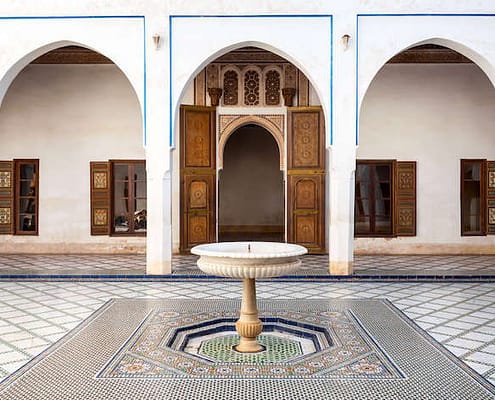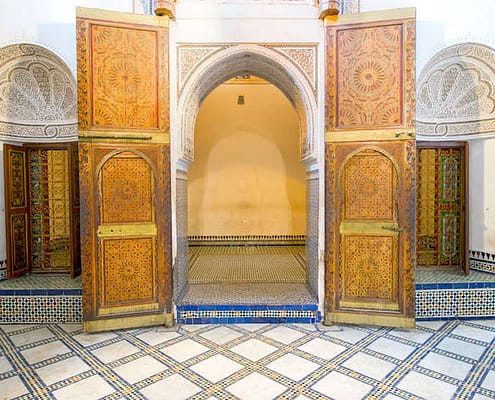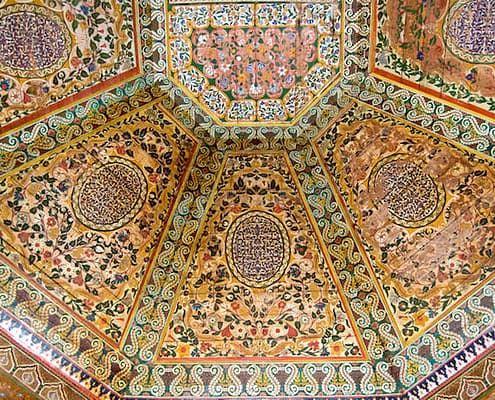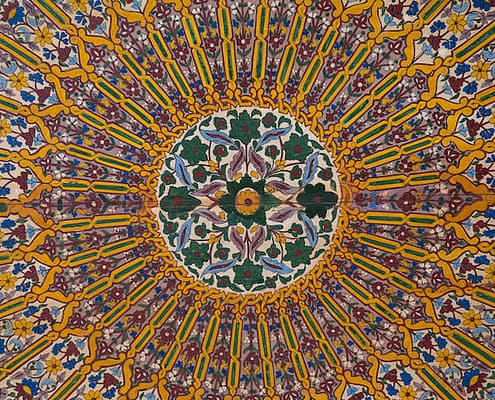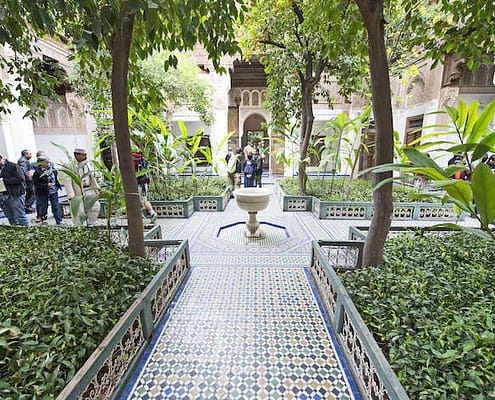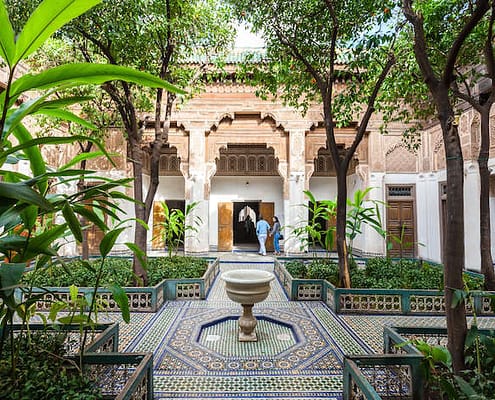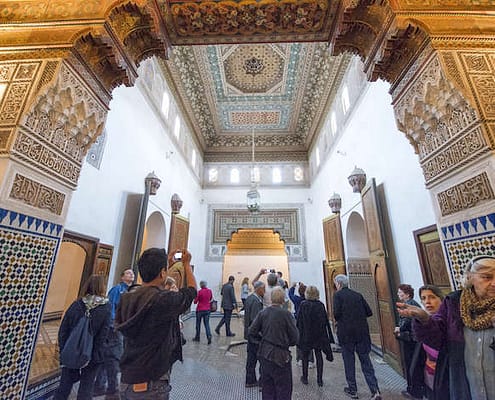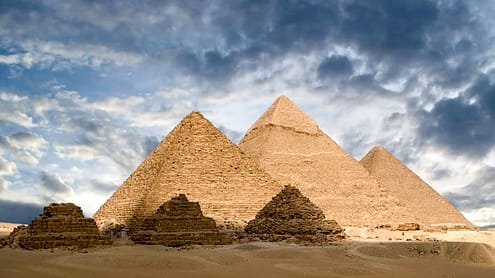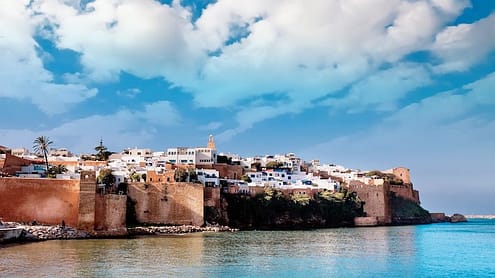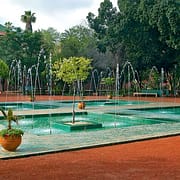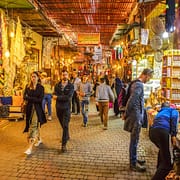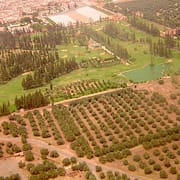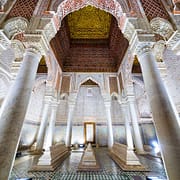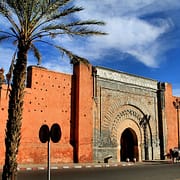Bahia Palace – The Extravagant Home of a Former Slave
Bahia Palace, pronounced Ba-He-Ha, is one of the best-preserved historical monuments in Marrakech, and you will find it included in many of our Egypt and Morocco Tours.

Bahia Palace, Marrakesh.
In Arabic, Bahia means brilliance, and as soon as you arrive at the site, you realize just how fitting the name actually is, especially if you take into account that it was built between 1886 and 1887.
A Brief History of Bahia Palace
The building of Bahia Palace was commissioned by Si Moussa, a former slave who had managed to rise through the ranks to become Moulay Hassan’s chamberlain, and later the grand vizier.
Although Si Moussa is rightly credited for the building of Bahia Palace, it was actually Abu ‘Bou’ Ahmed, another slave who went on to become vizier, that set about embellishing the original palace to the degree which visitors can see today.
In fact, this second round of beautification continued for a period of six years, from 1892 to 1900.
Unfortunately, the beauty and magnificence of the palace drew the attention of Pasha Glaoui, a warlord who decided to take control of the palace, and use it as a venue for hosting and entertaining French guests.
Needless to say, the French too were mesmerized by the splendor and charm of Bahia Palace, and subsequently dismissed Pasha Glaoui, and made the palace the official residence of the French protectorate’s resident general.
Today, one of the most appealing features of the palace is its splendid grand courtyard with its beautiful white Carrara marble floor.
You can visit this lavish palace and all your other favorite Morocco tourist attractions in comfort and style with one of our fully customizable Egypt and Morocco tour packages.
However, despite the tranquil appearance of the courtyard, it was once an area where everyday Moroccans were forced to wait in the unrelenting sun for hours and hours in order to beg Abu ‘Bou’ Ahmed for mercy if they were deemed to have fallen foul of the law during the years before the palace was seized by Pasha Glaoui.
Even though the French protectorate seized control of Bahia Palace from Pasha Glaoui, the French continued to support him in return for him supporting them. By all accounts, he was a very successful diplomat who formed close ties with a number of foreign leaders, including Sir Winston Churchill.
Visiting Bahia Palace
Today, Bahia Palace is undeniably one of the top historical Marrakech tourist attractions, although it does not attract as many tourists as Majorelle Garden which can actually becomes rather crowded during the high season. This alone makes if a really nice place to visit if you are hoping to avoid large crowds of tourists.
The palace itself is located on a large 2-acre plot of land in the center of Marrakech’s famous medina. It has a total of 150 rooms, including a harem section which is located alongside the palace’s Court of Honor.
The rooms and salons in the harem section were of course intended for the vizier’s 24 concubines, while his 4 wives lived inside the palace with him.
The palace as it is today, is best known for its beautiful interior which features an abundance of stained glass windows, hand-carved wooden wall coverings; beautiful cedar wood ceilings, and magnificent zellig-tiled fireplaces.
Although Bahia Palace is open to the public, it is not open in its entirety.
In fact, only a relatively small percentage of the palace and palace grounds are open to the public, but there is still plenty to see. This is why you will find Bahia Palace featured in several Egypt and Morocco Tours offered by Egypt Tours Plus.
Bahia Palace really does deserve to be on your list of must-see tourist attractions when you are planning your trip to Morocco.
Last Updated on July 26, 2020

